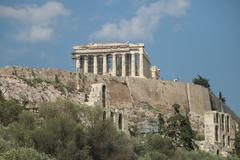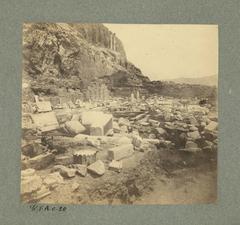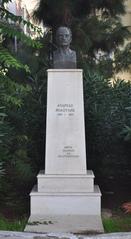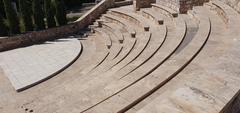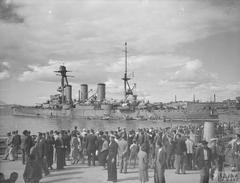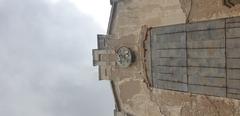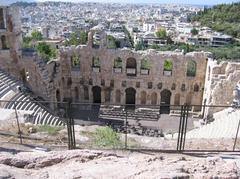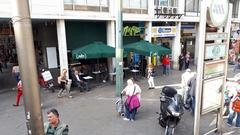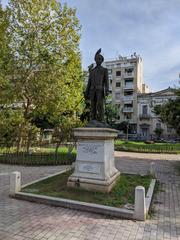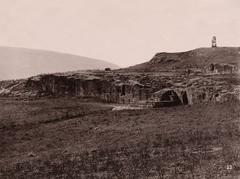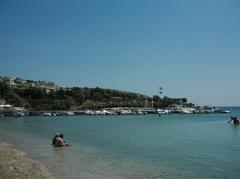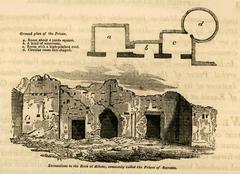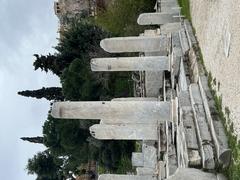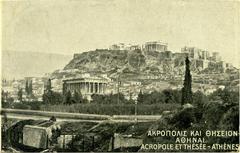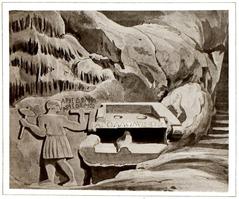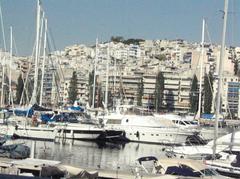Visiting Archaeological Museum of Piraeus: Hours, Tickets, and Tips
Date: 23/07/2024
Introduction
The Archaeological Museum of Piraeus in Greece offers visitors a unique glimpse into the rich maritime history and cultural evolution of one of the world’s most significant port cities. Located in the bustling city of Piraeus, just a short distance from Athens, the museum is home to a vast collection of artifacts that span from the Mycenaean period to the Roman era. Established in 1935, the museum has grown significantly over the years, expanding its collections and enhancing its facilities to provide a comprehensive and engaging experience for visitors (Hellenic Ministry of Culture and Sports). The museum’s exhibits include renowned bronze statues, intricate pottery and ceramics, and invaluable epigraphic artifacts, all of which offer insights into the daily lives, religious practices, and artistic achievements of the ancient Greeks. As a major tourist attraction and educational resource, the Archaeological Museum of Piraeus continues to draw visitors from around the world who are eager to explore Greece’s rich cultural heritage and maritime history (TripAdvisor).
Table of Contents
- Introduction
- History of the Archaeological Museum of Piraeus
- Collections and Exhibits
- Archaeological Significance
- Educational and Cultural Role
- Visitor Information
- Conclusion
- FAQs
History of the Archaeological Museum of Piraeus
Establishment and Early Years
Established in 1935, the Archaeological Museum of Piraeus is located in the bustling port city of Piraeus, Greece. Originally housed in a neoclassical building designed by Ioannis Lazarimos, the museum aimed to preserve the rich archaeological finds from the Piraeus region, which has been a significant maritime hub since ancient times.
Expansion and Renovation
In the 1960s, the museum underwent significant expansion to accommodate the growing number of artifacts discovered in the region. A new wing, designed by architect Aris Konstantinidis, allowed for a more comprehensive display of the museum’s collections. Modern conservation techniques and climate control systems were later introduced to enhance the preservation and display of the artifacts.
Collections and Exhibits
Bronze Statues
The museum’s collection of bronze statues is particularly renowned. Notable pieces include the statues of Athena, Artemis, and Apollo, dating back to the 4th century BCE. These statues, discovered in 1959, are considered masterpieces of ancient Greek art.
Pottery and Ceramics
The museum boasts an extensive collection of pottery and ceramics, ranging from the Geometric period (900-700 BCE) to the Hellenistic period (323-31 BCE). These artifacts provide valuable insights into the daily lives, religious practices, and artistic achievements of the ancient Greeks.
Epigraphic Collection
Another significant aspect of the museum’s collection is its epigraphic artifacts, which include inscriptions on stone and metal, providing crucial information about the political, social, and economic life of ancient Piraeus.
Archaeological Significance
Maritime History
Piraeus has been a significant maritime center since ancient times, serving as the primary port of Athens. The museum’s collections reflect this maritime heritage, with numerous artifacts related to seafaring and trade.
Urban Development
The archaeological finds displayed in the museum shed light on the urban development of Piraeus. Excavations have revealed ancient fortifications, public buildings, and residential areas, illustrating the city’s growth over the centuries.
Educational and Cultural Role
Educational Programs
The museum offers guided tours, workshops, and lectures designed to enhance visitors’ understanding of the artifacts and the history of Piraeus. Specialized programs for students are also available.
Cultural Events
The museum hosts various cultural events, including temporary exhibitions, performances, and lectures, providing opportunities for visitors to engage with the collections in dynamic ways.
Visitor Information
Admission and Accessibility
Admission to the museum is reasonably priced, with discounts available for students, seniors, and groups. The museum is fully accessible to visitors with disabilities, with ramps and elevators providing access to all exhibition areas.
Visitor Tips
To make the most of your visit, consider these tips:
- Plan Ahead: Check the museum’s website for information on opening hours, admission fees, and special events.
- Guided Tours: Take advantage of the guided tours for valuable insights into the artifacts.
- Photography: Photography is allowed in most areas; check for any restrictions in temporary exhibition spaces.
- Souvenirs: The museum shop offers a range of souvenirs, including replicas of artifacts and books.
Conclusion
The Archaeological Museum of Piraeus offers a fascinating glimpse into the ancient world, making it a must-visit for history enthusiasts. Plan your visit today and explore the rich heritage of Piraeus. For more information, visit the Archaeological Museum of Piraeus website.
FAQs
What are the visiting hours of the Archaeological Museum of Piraeus?
- The museum is open daily, with extended hours during the summer months. Check the official website for the most up-to-date information.
How much are tickets to the Archaeological Museum of Piraeus?
- Admission is reasonably priced, with discounts available for students, seniors, and groups.
Is the museum accessible to visitors with disabilities?
- Yes, the museum is fully accessible, with ramps and elevators providing access to all exhibition areas.
References
- ‘Visiting the Archaeological Museum of Piraeus - History, Tickets, and Tips’, 2024 (source)
- ‘Exploring the Archaeological Museum of Piraeus - Visiting Hours, Tickets, and Historical Significance’, 2024 (source)
- ‘Complete Visitor Guide to the Archaeological Museum of Piraeus - Hours, Tickets, and Tips’, 2024 (source)
